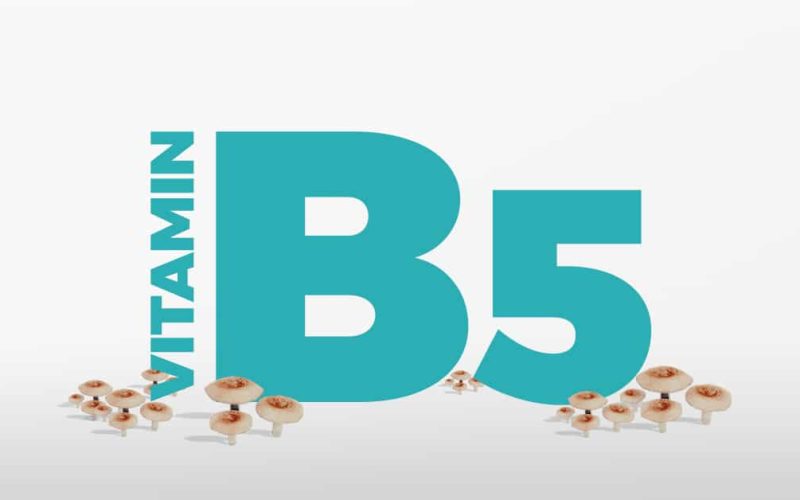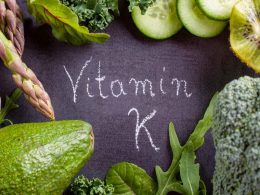Vitamins are an important class the food. And for many of us, eating fruits daily is a sure way to get the load we need in terms of vitamin intake.
While we are not here to discuss all vitamin types, let’s take a quick look at vitamin B5.
What is vitamin B5?
Vitamin B5, also called pantothenic acid, is not one of the most talked-about vitamins, but it is one of the most vital vitamins for human life. It’s necessary for the making of blood cells, and it helps you change the food you consume into energy.
Fast facts
1. Vitamin B5 is one of the eight B vitamins.
2. All B vitamins help with converting the protein, carbohydrates, and fats you eat into energy.
B vitamins are also needed for:
- Healthy skin, hair, and eyes
- Proper functioning of the nervous system and liver
- Healthy digestive tract
- Making red blood cells, which transports oxygen throughout the body
- Creating sex and stress-related hormones in the adrenal glands
Sources of vitamin B5
There are several sources of vitamin B5. The best way to get the right amount of vitamin B5 is to feed on a healthy, balanced diet daily.
- Vitamin B5 is one of the most natural vitamins to incorporate into a healthy diet. It is found in most vegetables, especially:
- Broccoli
- Members of the cabbage family
- White and sweet potatoes
- Whole-grain cereals
Some other healthy sources of B5 are:
- Mushrooms
- Nuts
- Beans
- Peas
- Lentils
- Meats
- Poultry
- Dairy products
- Eggs
What is the right quantity of vitamin B5 that each person should you get?
As with all nutrients, the recommended intake of this B vitamin varies by age. Here are the recommended daily allowances of Vitamin B5 set by the United States Institute of Medicine.
| Life Stage Group: Infants 6 months and younger RDI of Vitamin B5: 1.7 mg |
| Life Stage Group: Infants 7 to 12 months RDI of Vitamin B5: 1.8 mg |
| Life Stage Group: Children 1-3 years RDI of Vitamin B5: 2 mg |
| Life Stage Group: Children 4-8 years RDI of Vitamin B5: 3 mg |
| Life Stage Group: Children 9-13 years RDI of Vitamin B5: 4 mg |
| Life Stage Group: 14 years or older RDI of Vitamin B5: 5 mg |
| Life Stage Group: Pregnant or breast-feeding women RDI of Vitamin B5: 7 mg |
It’s very rare for people living in the United States to have a vitamin B5 deficiency.
Generally, only individuals who are malnourished will deal with a B5 deficiency.
Mayo Clinic says that a vitamin B5 deficiency is not likely to lead to any medical problems by itself. However, those who have a B5 deficiency are most likely experiencing other vitamin deficiencies as well.
The symptoms of a vitamin B5 deficiency most likely include:
- Headache
- Fatigue
- Irritability
- Impaired muscle coordination
- Gastrointestinal problems
Symptoms will generally disappear once you begin to get enough intake of vitamin B5.
Use of vitamin B5 in medical conditions
- People are prescribed vitamin B5 supplements and derivatives for the treatment of a broad range of conditions. The conditions include:
- Acne
- ADHD
- Alcoholism
- Allergies
- Asthma
- Baldness
- Burning feet syndrome
- Carpal tunnel syndrome
- Celiac disease
- Chronic fatigue syndrome
- Colitis
- Conjunctivitis
- Convulsions
- Cystitis
- Dandruff
- Depression
- Diabetic nerve pain
- Dizziness
- Enlarged prostate
- Headaches
- Heart failure
- Insomnia
- Irritability
- Leg cramps
- Low blood pressure
- Low blood sugar
- Multiple sclerosis
- Muscular dystrophy
- Neuralgia
- Obesity
- Osteoarthritis
- Parkinson’s disease
- Premenstrual syndrome
- Respiratory disorders
- Rheumatoid arthritis
- Salicylate toxicity
- Tongue infections
- Wound healing
- Yeast infections
While doctors prescribe vitamin B5 to be taken for these conditions, there is almost no evidence that this vitamin helps most of the conditions listed above. This means that there is a need for more scientific study for its effectiveness to be correctly determined.
Cosmetic uses of B5
Vitamin B5 is often added to skin and hair products, as well as makeup. Dexpanthenol is a chemical made from vitamin B5 and is used in lotions and creams designed for deep skin moisturization.
In hair products, vitamin B5 can help include some volume and sheen. It is also known to improve hair texture, especially for hair that is damaged by chemicals or styling.
Some sources have found out that the application of a compound that contains panthenol, which is a form of vitamin B5, could help out an end to thinning hair. However, it is not potent enough to make your hair grow back.
B5 chemicals
This vitamin can also be a topical treatment as it can be applied to the bare skin to relieve itchiness and aid the healing process from skin conditions, like:
- Eczema
- Insect bites
- Poison ivy
- Diaper rash
Dexpanthenol is also known to be used to treat and prevent skin reactions from radiation therapy.
Researchers are now studying the chemical called pantethine, which is one of the substances made from vitamin B5, to see if it has the ability to lower cholesterol.
One Source has reported that a daily intake of pantethine for up to 16 weeks may lower levels of LDL-C or “bad” cholesterol. The study found that it can also help reduce the risk of coronary heart disease.
The conclusion
Vitamin B5 is an essential vitamin that helps the human body convert food into energy and make blood cells. As long as you feed on a balanced and healthy diet every day, it’s improbable that you’ll ever have to deal with a vitamin B5 deficiency or even need to use supplements.
Please leave a comment below.









